.300 Blackout vs 5.56mm NATO: The AR-15 Intermediate Cartridge Rumble
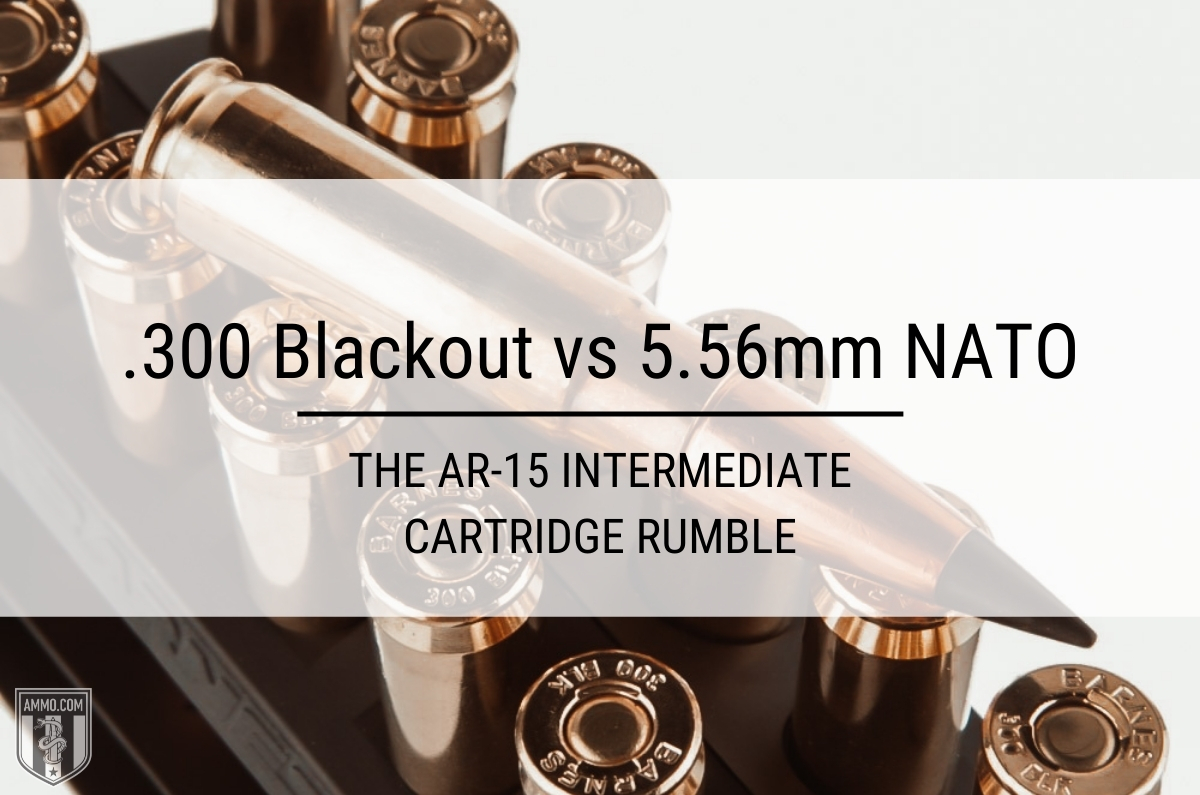 The 5.56mm NATO round has been the gold standard AR-15 cartridge for well over 60 years. It has been the ammo issued to our frontline soldiers for over a generation and has seen combat on 5 continents in the hands of the U.S. Military and our NATO allies.
The 5.56mm NATO round has been the gold standard AR-15 cartridge for well over 60 years. It has been the ammo issued to our frontline soldiers for over a generation and has seen combat on 5 continents in the hands of the U.S. Military and our NATO allies.
However, some shooters wanted more out of their AR platform, they wanted the ability to shoot a 30-caliber bullet without switching over to the AR-10 and 308 Winchester.
Enter the 300 AAC Blackout, the successful marriage of 7.62x39mm terminal ballistics with the modularity of the AR platform. It is a potent combination that many shooters have declared superior to the 5.56mm NATO round.
But which round is better?
Does the ballistic performance of the 300 BLK warrant widespread adoption of the cartridge by the military, law enforcement, and civilians?
Or does the stalwart performance of the 5.56 continue to dominate with its long-range prowess, muzzle velocity, and stopping power?
In this article, we will compare the new-to-the-scene 300 Blackout to the tried-and-true 5.56mm NATO in this high-velocity AR-15 shootout. Grab those PMAGs and Aimpoints because we are about to blast away at 300 Blackout vs 556!
What is 300 AAC Blackout? The Dark Ops Wishlist Given Form
The development of the 300 AAC Blackout (designated 300 BLK by SAAMI) rifle cartridge began in 2010 when Robert Silvers of the Advanced Armament Corporation (which was later acquired by Remington) was approached by a member of the US Military “dark ops” community.
The unnamed military customer came to him with a problem that Silvers was eager to solve.
With the widespread adoption of the 5.56x45mm NATO cartridge (civilian ammo designation: 223 Remington) for the M4 carbine, US troops were having to use the round for both long-range and close-quarters combat.
Overall, some special forces units were unhappy with the stopping power that the 5.56 NATO and the 9mm (used in several SMGs) offered during close-quarters combat and he wanted something that had more “oomph”. Something along the lines of the 7.62x39mm Soviet round fired through the AK-47.
However, there were some other requirements that this customer needed as well:
- The rounds needed to fit into a standard STANAG AR-pattern magazine and maintain a 30-round ammo capacity
- The cartridge case head must be the same as 5.56mm NATO so a bolt change was not needed
- It had to shoot 30 caliber bullets and mimic the ballistic performance of the 7.62x39mm Soviet round
- The new rifle cartridge needed to be compatible with short-barreled rifles (SBR, barrels under 16”) and be completely functional with a suppressor/silencer
- Both supersonic and subsonic varieties of ammo needed to be functional for long-range shots as well as close-quarters battle, respectively
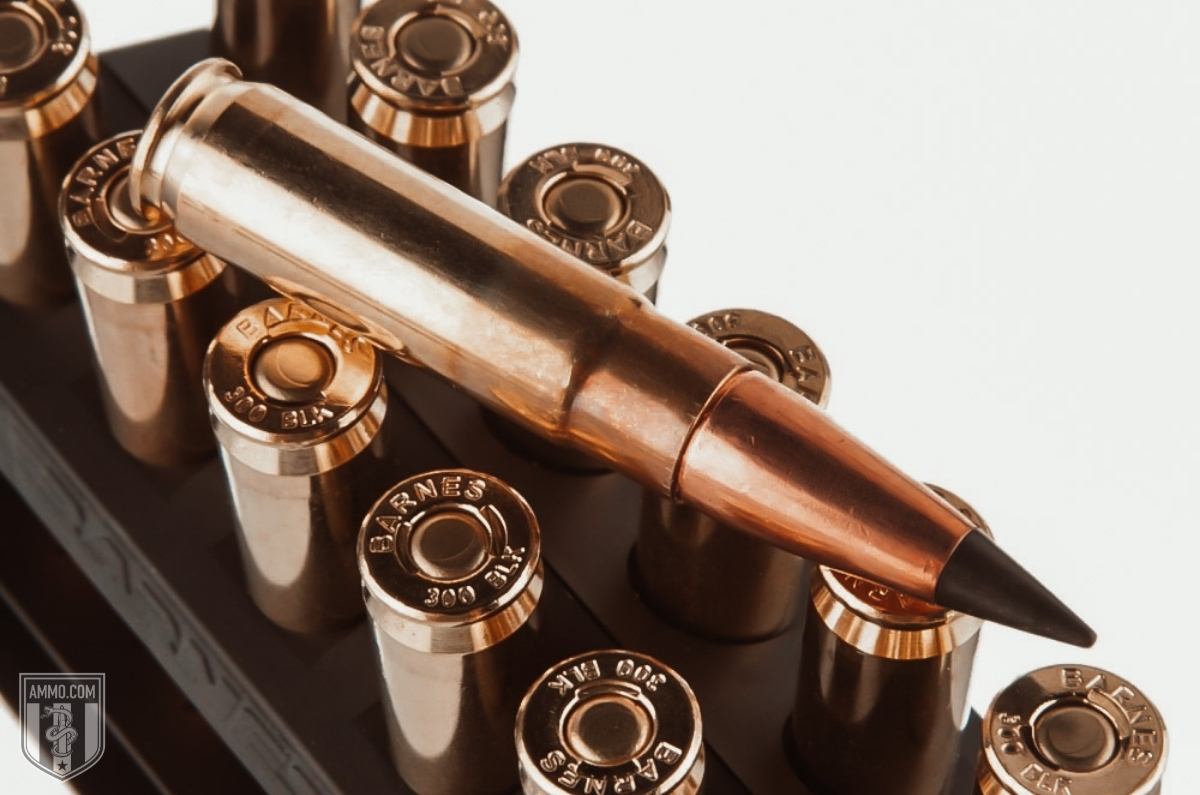
However, Silvers was not dismayed, and he returned to AAC to begin work on a new cartridge that would meet all these needs. The search for a host cartridge had begun.
Attempts to integrate new calibers into the AR platform were nothing new to the shooting community. The adaptation of the 6.8 Remington Special Purpose Cartridge (SPC) and 6.5 Grendel into the AR platform were mildly successful; however, they fell short of the mark in several key areas.
The 6.8 SPC and the 6.5 Grendel have a larger case head than the 5.56mm NATO cartridge, so a new bolt was required for the host carbine. Secondly, although both cartridges could be loaded into a standard capacity AR-15 magazine, it could not be loaded to 30 rounds because of the increased case size.
Colt Firearms and other manufacturers had been unsuccessful in adapting a 30-caliber cartridge to the M4 carbine. Complicating matters, the M4 cannot be easily modified to shoot 7.62x39mm Soviet either as the severe case angle causes multiple chambering issues using a standard M4 magazine.
Silvers continued his hunt to find a proper host cartridge for his new round by looking at different wildcat cartridges in the shooting community.
The 300 Whisper was probably the best wildcat cartridge that Silvers encountered, and it eventually became the host for the 300 BLK. However, the 300 Whisper could not simply be adapted to be fired from an AR platform because it did not have standardized loadings with SAAMI (Sporting Arms and Ammunition Manufacturers’ Institute).
As AAC/Remington was a SAAMI company, it could not load 300 Whisper ammo. Therefore, Silvers took the concepts from the 300 Whisper and modified it to meet their design specifications.
The new round was called the 300 AAC Blackout (300 BLK or 300 Blackout) and was approved by SAAMI on January 17, 2011.
Although many proclaimed that the 300 Blackout round was going to be another one of those “fly-by-night cartridges” it has since become the 2nd most popular chambering for the AR platform. Converting an AR-15 to the 300 BLK round is as simple as changing the barrel, the gas system, bolt, and magazines remain unchanged. Or you could just swap out the upper receiver for ultimate versatility!
300 Blackout Ammo Specs
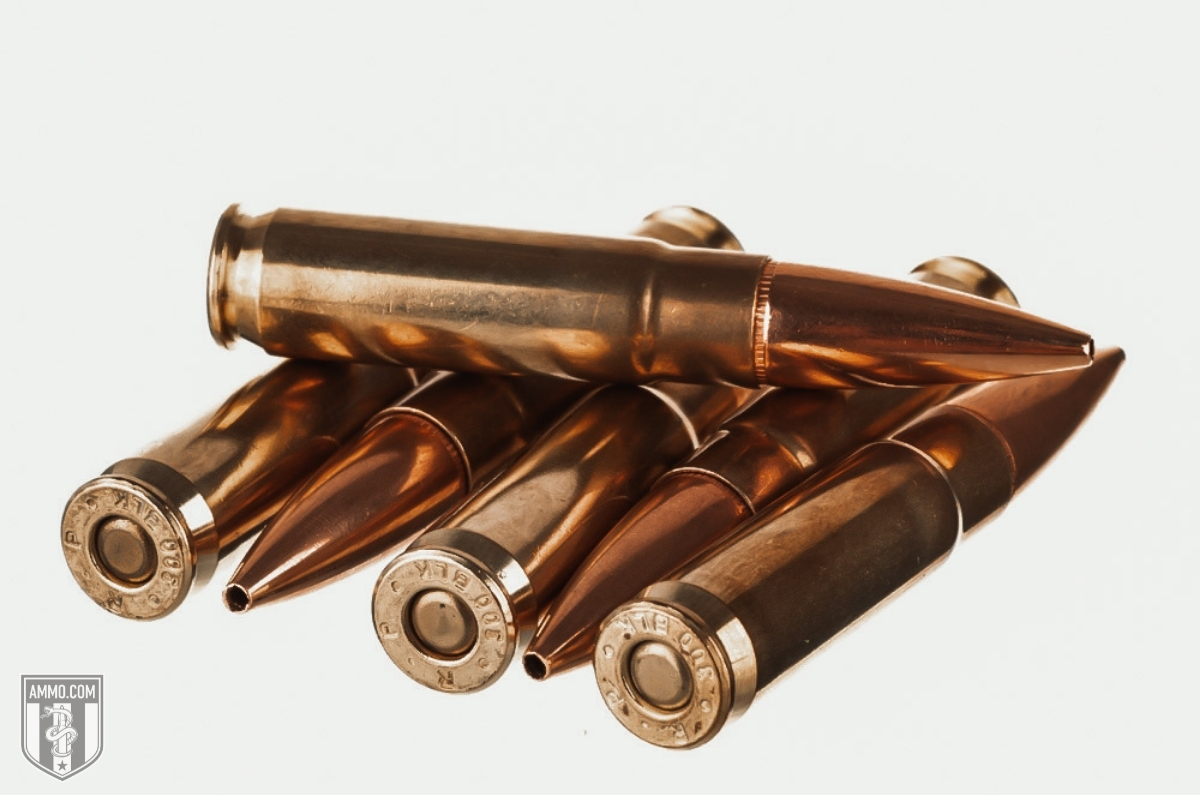
Since its approval by SAAMI in 2011, the 300 BLK has exceeded expectations in almost every category.
With an overall case length of 35mm, the 300 BLK has a case capacity of approximately 19.2 grains. The reduced case length was required to allow it to fit into a standard M4 carbine magazine while being loaded with a longer 30 caliber bullet.
300 BLK ammo can be broken down into two different bullet weights, 220 grain subsonic and 110 to 125 grain supersonic.
Supersonic ammo, typically firing a 125 grain bullet, will have a muzzle velocity of approximately 2250 fps and have a muzzle energy of around 1404 ft-lbs. Industry standards list the effective range of the supersonic 125 grain bullet loadings to be 500 yards.
In contrast, subsonic ammo will fire a 220 grain bullet and have a muzzle velocity of around 1000 fps and a muzzle energy of 488 ft-lbs with an effective range of 200 yards.
These two popular loadings really illustrate the versatility of 300 BLK ammo. With a simple magazine change, a shooter can switch from supersonic ammunition and long-range engagements to subsonic ammunition for short range combat.
Furthermore, the 300 BLK was designed specifically to experience a full powder burn when being fired in a 9” short barreled rifle (SBR), preferably with a suppressor/silencer.
What is 5.56x45mm NATO? Toppling the 308 Winchester
After the Korean War, the U.S. Military started designing a new rifle cartridge for its frontline service rifles. And in 1954 the 308 Winchester (7.62x51mm NATO) was adopted to fill this role.
However, after early engagements in Vietnam, the U.S. Army wanted a new rifle that fired a lighter, intermediate cartridge similar to the AK-47. This would allow their soldiers to carry more ammo into battle while maintaining powerful terminal ballistics to remain combat effective.
This was the beginning of the 223 Remington.
Development of the 223 Remington rifle round began in 1957 and the final design was submitted by Remington Arms to the Sporting Arms and Ammunition Manufacturers' Institute (SAAMI) in 1962.
The development of the 223 Remington cartridge was a joint operation organized by the U.S. Continental Army Command between Fairchild Industries, Remington Arms, and Eugene Stoner of Armalite, using the 222 Remington as a parent cartridge.
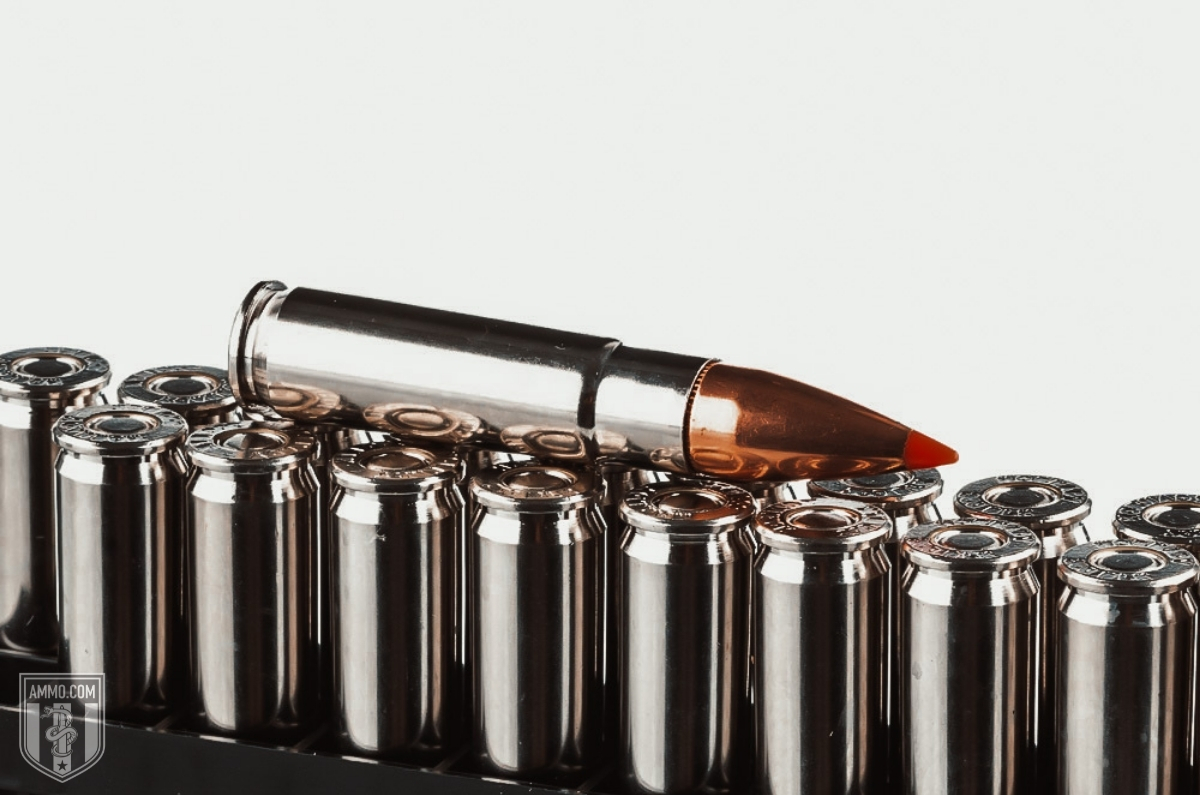
The cartridge case of the 222 Remington was elongated 0.06” and the neck was shortened. These changes allowed for the new 223 Remington ammunition to have a 20% larger powder charge than its progenitor.
Eugene Stoner was the primary inventor of the AR-10 rifle (chambered in 7.62 NATO), and he was invited to scale down to accommodate the new .223 Rem cartridge.
The resulting rifle that the military accepted was the M16, the civilian version being the AR-15. Since adoption, the AR-15 carbine has become the most popular sporting rifle in US history.
With its lightweight and low recoil, the M16 is an ideal platform for full auto fire and the ammo is considerably lighter than its 308 Winchester counterpart. This allows soldiers to carry more ammo into battle for the same weight, meaning they can stay in the fight longer without impeding their mobility.
The M16 had some teething problems in the Vietnamese jungles, which soured some GIs on the platform entirely. Horror stories of poor reliability in Vietnam have (unfairly) plagued the M16 and AR-15 rifles for years.
However, after some tweaks were made to the M16 chamber lining, the powder used for 223 Rem ammo, increasing the speed of barrel twist rates (1:10 vs 1:7), and the widespread distribution of cleaning kits to all frontline soldiers; the reliability issues with early M16’s all but disappeared.
Since then, the M16 and the shorter barrel length M4 Carbine have become a ubiquitous symbol of American military prowess across the globe.
The original 223 Rem mil-spec ammo that the U.S. Military adopted was named M193, which fired a 55 gr full metal jacket (FMJ) bullet at a muzzle velocity of 3260 FPS with a muzzle energy of 1294 foot-pounds.
The new 223 Remington cartridge had sufficient long range capability out to 500 yards while maintaining accuracy.
The 223 Rem was released to the civilian market one year before adoption by the U.S. Army, and varmint hunters enjoyed the new cartridge’s low recoil, extreme accuracy, and lower pressure.
The new 223 Remington cartridge simply outperformed the 222 Rem and the 222 Rem Magnum in almost all categories and has become the de facto varmint hunting cartridge ever since.
It was not long before all the major firearm manufacturers offered semi-auto and bolt action rifle in the new 223 Remington cartridge.
For varmint hunters, lower bullet weight options are available from 40 gr all the way up to 55 gr. Light weight bullets like these will want to utilize a slower barrel twist rate to ensure they bullets do not fragment upon exiting the barrel. A 1:12 twist is ideal for these lighter bullets.
For reference, a 1:12 barrel means that the bullet will experience 1 full revolution every 12” of barrel length.
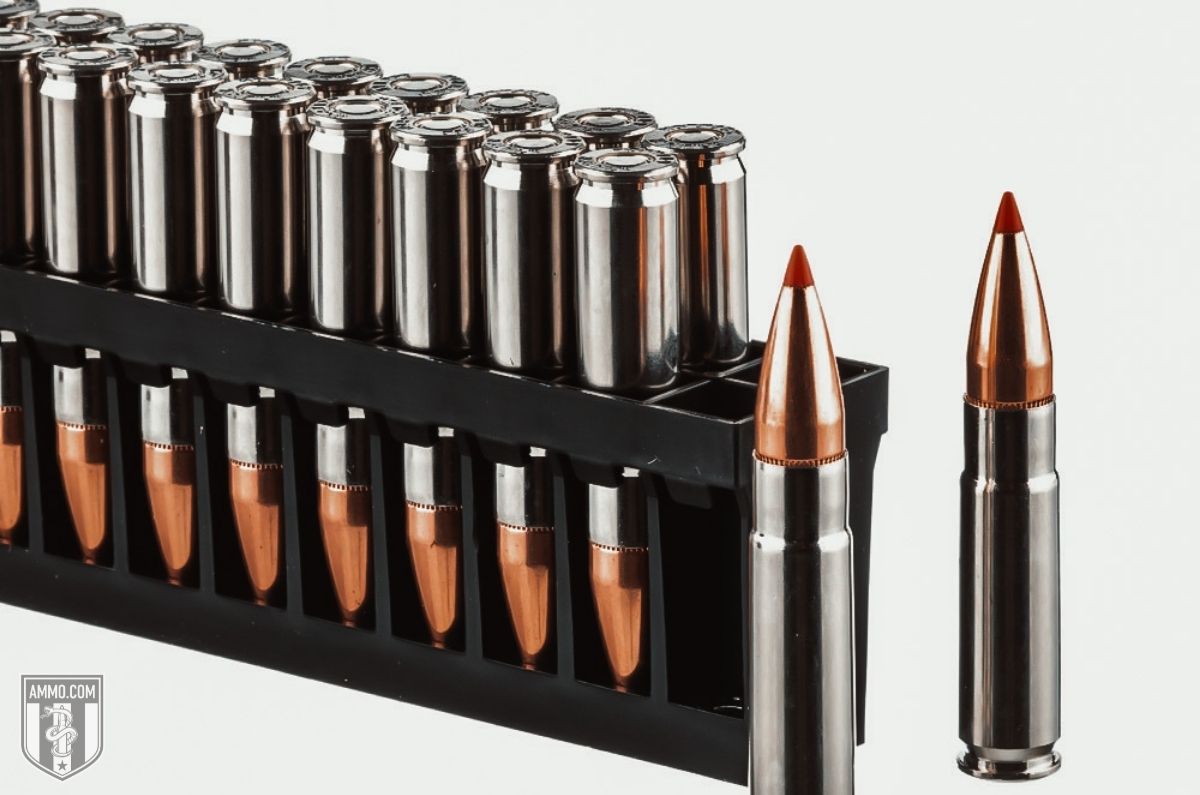
If you need a little more “oomph” or want to stretch your rifle’s legs a little, heaver 62-80 grain bullets will help you get that long range accuracy that you crave. Faster twist rate barrels, such as a 1:7, will be ideal for these heavier bullets.
The 223 Remington M193 cartridge served the U.S. Army all the way through Vietnam, however, in 1980 FN Herstal changed the game.
In 1980, the Belgian firearms and ammo manufacturer Fabrique Nationale (FN) Herstal submitted their designs for the SS109 5.56x45mm cartridge to NATO for approval. The SS109 fires a 62-grain FMJ bullet with a mild steel penetrator tip at 3,110 fps and has a muzzle energy of 1,325 ft-lbs.
The U.S. Military designation for the 5.56mm NATO SS109 is the M855.
The new 5.56mm NATO cartridge had identical external dimensions to the 223 Remington, however the NATO cartridge can handle a higher maximum pressure than the 223 Rem.
However, as with many things in life, sometimes the newer, shinier toy is not always the best.
The adoption of the SS109 NATO round has come under some criticism due to battlefield reports of the ineffectiveness of the 5.56’s stopping power, accuracy, and effective range. This has led to several advancements in 5.56mm NATO ammunition.
One of the biggest criticisms of the SS109 NATO cartridge was its inability to yaw (tumble) and fragment. The M193 was well known for tumbling and fragmenting upon entry into soft tissue, causing additional damage to the target.
These complaints from U.S. Military personnel primarily began surfacing during the 2nd War in Iraq and the invasion of Afghanistan during the Global War on Terror. The 300 AAC Blackout was born from these shortfalls in the 5.56mm NATO round.
5.56 vs .300 Blackout: Caliber Comparison
There’s quite a lot of chatter on the Internet about whether 300 Blackout ammo is just an over-priced boutique cartridge or that the 5.56 is just a varmint round and has insufficient terminal performance for close quarters battle (CQB).

Proponents of the 300 BLK or 5.56 will tout their cartridge as superior, and it’s folly to think that we can declare one cartridge better than another.
However, I have no doubt that we can answer the question:
Should you go with a standard AR-15 in 223 Remington or that sexy new AR pistol in 300 BLK with a short barrel, quad-rail, and a muzzle that’s just begging for a suppressor, SBR tax stamp, and your CVC code?
Both the 300 Blackout and the 5.56 NATO have specific advantages and disadvantages that we will explore in the sections below.
5.56 vs .300 Blackout: Recoil
Many shooters scoff at the idea of comparing felt recoil when discussing calibers, stating that you should just “man up” and take any added recoil a cartridge might impart on your shoulder. Because “bigger is better” right?
Not necessarily.
Excessive recoil can cause shooters to develop bad shooting habits, such as recoil anticipation or jerking the trigger. These bad habits will negatively affect your downrange accuracy and can be difficult to break without instruction and proper application of shooting fundamentals.
However, neither the 5.56mm NATO or 300 Blackout round have offensive recoil that will leave bruises on your shoulder like a 338 Lapua Magnum would.
My physics gurus have probably already determined that the 300 Blackout will have more recoil than the 5.56 NATO as thee 300 BLK round fires a heavier bullet.
In general, .300 Blackout ammo will have approximately 3 times more recoil than a 5.56.
.300 Blackout vs 5.56: Accuracy
Accuracy is a tricky category to empirically analyze as there are factors that cannot be calculated. The rifle system being used, barrel life, consistency of ammo, skill of the shooter, and environmental conditions all play a part in accuracy.
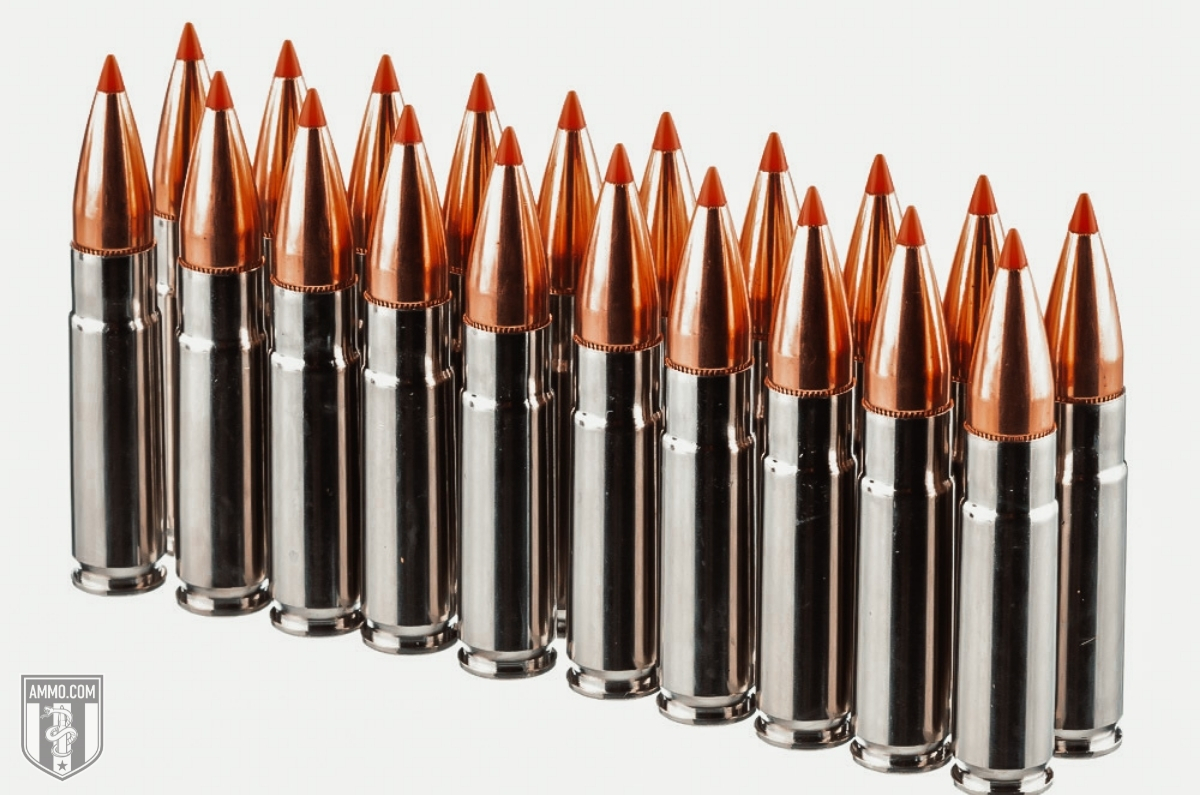
Recoil also plays a part in accuracy, especially when shooting longer ranges, as many shooters report that they are more accurate with a rifle that has less recoil. Again, this is because the shooter can focus more on the fundamentals of shooting (breath control, trigger squeeze, not disturbing sight alignment) as opposed to worrying about how bad the shot is going to hurt.
However, as we will see in the next section about trajectory, the 5.56mm NATO also has the added advantage of being a high velocity round and lower bullet drop over range.
This means that fewer adjustments need to be made for the 5.56 compared to the .300 Blackout when shooting at range. Added simplicity will mean that shooters firing the 5.56 will generally be more accurate at range.
5.56 vs .300 Blackout: Trajectory
Trajectory is how we quantify a bullet’s flight path to its target measured in bullet drop.
Again, the 5.56mm NATO is going to have a flatter trajectory compared to the .300 Blackout round as the 5.56 is traveling at higher velocity and fires a lighter bullet. When you consider all of these factors, it’s no surprise that the 5.56 has lower bullet drop when compared to the 300 BLK.
The 5.56 will have no issues shooting out past 400 yards, while the 300 Blackout will struggle to make it that far as it is a heavier, slower round. Even with supersonic ammo, the .300 Blackout hemorrhages velocity and the bullet drop starts to get extreme.
For a supersonic 300 BLK round at 400 yards, you will see approximately -55” of bullet drop compared to -23” for a 62-grain bullet weight SS109 5.56mm NATO round. That’s half the bullet drop for 5.56!
.300 Blackout vs 5.56: Ballistic Coefficient
When I start talking about ballistic coefficient (BC) to my shooting buddies, I often get a “deer in headlights” look.
In short, the ballistic coefficient for a given bullet is a measure of how well it resists wind and air resistance. It’s a numeric representation of how aerodynamic a bullet is, a high BC is preferred and means the bullet will resist wind drift more easily.
The way a bullet’s ballistic coefficient is calculated is a bit complicated, so we won’t cover that today as I don’t want your eyes to glaze over!
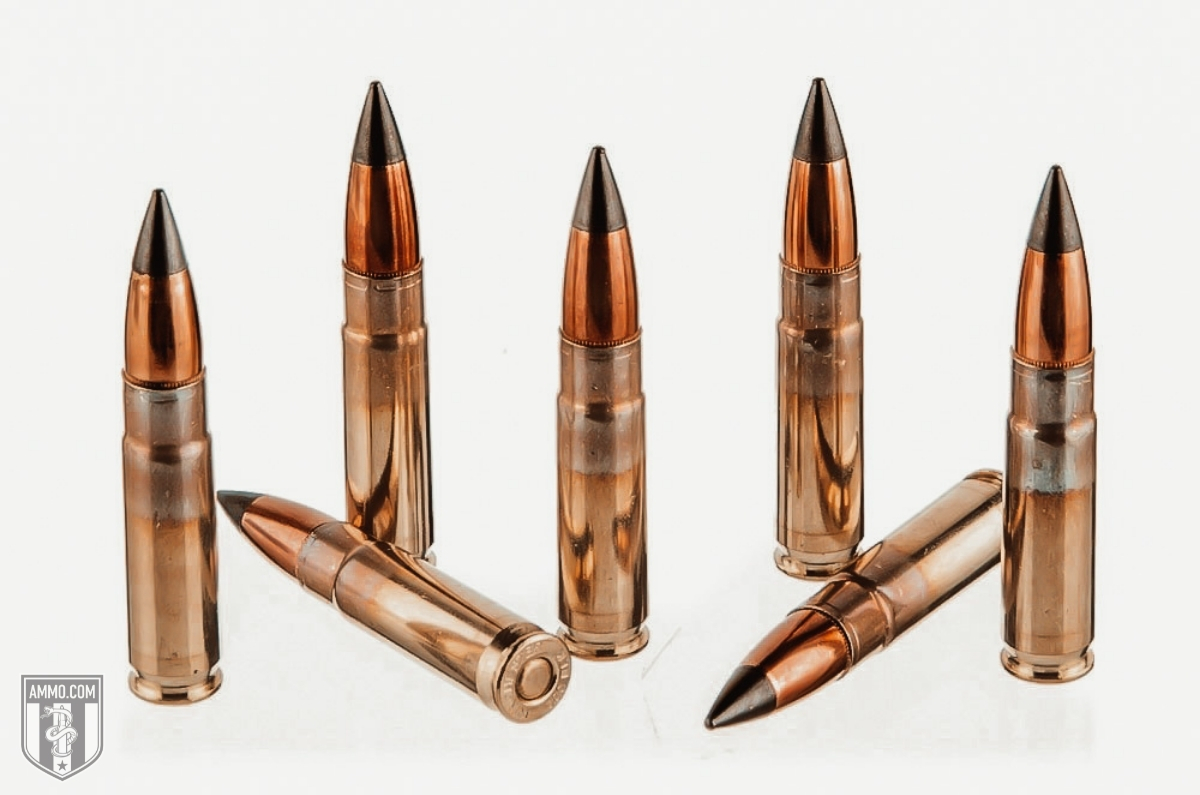
Generally, a heavier bullet will have a higher BC.
With that in mind, it’s not too surprising that the 300 BLK will generally have a higher ballistic coefficient than the 5.56mm NATO. This is because the bullets the .300 Blackout fires are sometimes 3 times heavier than the 5.56 bullets, and all that added weight makes it more resistant to wind drift.
Some of the heavier subsonic bullets for 300 Blackout have extremely high BC, such as the 208 gr Hornady A-Max, at 0.648. However, 300 BLK ammo has a BC around 0.35 in general. This is in stark contrast to the 5.56 which averages in around 0.248 for BC.
The 300 Blackout is the clear winner when it comes to ballistic coefficient and resisting wind drift.
5.56 vs .300 Blackout: Sectional Density
Sectional Density (SD) is the measure of how well a bullet penetrates a target. This is extremely important when hunting big game, as you need a bullet that can punch through thick hide, bone, and sinew.
Sectional density is calculated by comparing the bullet weight and the bullet diameter, the higher the number the more effective it will be at penetrating a target. The higher the SD the deeper the bullet will penetrate into the target.
Bullet jacket design also plays a part in penetration, as a bullet designed to expand like a soft point (SP), ballistic tip, or jacketed hollow point (JHP) will naturally penetrate less than a full metal jacket (FMJ).
Overall, as the 300 Blackout fires a heavier bullet, it has higher sectional density than a 5.56.
The 300 BLK has an average sectional density of approximately 0.21, where the 5.56mm NATO has an average sectional density of 0.181.
5.56 vs .300 Blackout: Hunting
When it comes to small game hunting, it is hard to beat the 5.56mm NATO/223 Remington. With a long history in the varmint hunting arena, the 5.56 NATO has an established track record of being the bane of coyotes, foxes, groundhogs, prairie dogs, and other small game across North America.
However, anything larger than that and the 5.56 simply does not have the terminal performance to ethically claim medium to large game such as whitetail. Furthermore, many states do not allow the use of 0.224” diameter bullets for hunting deer or antelope.
Here is where .300 Blackout ammo steps up to the plate and those spectacular terminal ballistics come into play.
With its larger, 30-caliber bullet the supersonic variety 300 BLK is more than enough to take down a whitetail or feral hog within 200 yards. Being an AR platform, a .300 Blackout is a formidable hunting rifle allowing for quick follow-up shots to ensure you fill your bag limit.
A quick note on subsonic ammunition and hunting – it is NOT recommended to use subsonic ammo for hunting medium game. The subsonic rounds simply do not have the terminal ballistics at hunting ranges to be effective and ethical at harvesting game.
Therefore, make sure you are using supersonic .300 Blackout ammo when hunting.
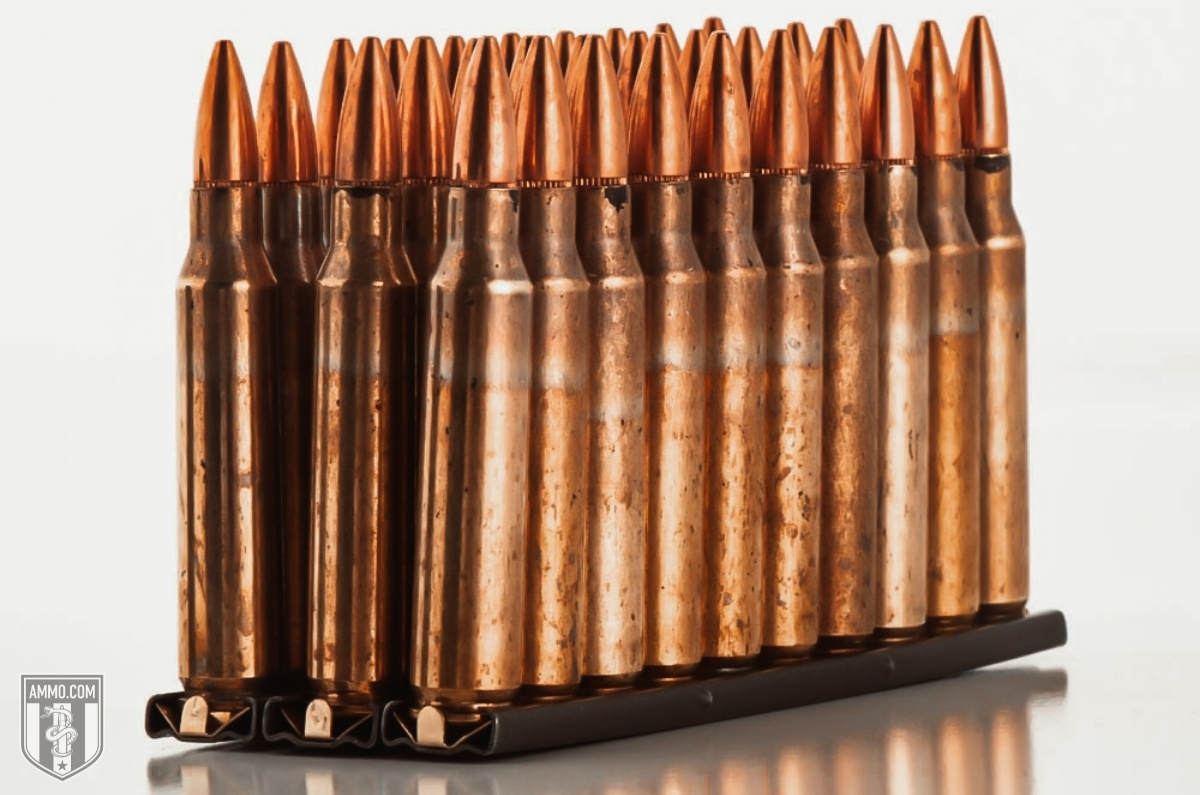
5.56 vs .300 Blackout: Suppressor and SBR Integration
One of the key attributes of the 300 AAC Blackout is its ability to be effectively suppressed in a short barrel AR-15 (or M4 carbine for our military).
In a close quarters battle (CQB) like our soldiers experienced in the urban setting of Iraq, having a maneuverable rifle with a short barrel and a suppressor to reduce the rifle report is critical for maintaining situational awareness and communication during a firefight indoors.
As sound will echo off interior walls, a rifle fired indoors will be considerably louder than what is experienced shooting outdoors, necessitating the use of suppressor.
Suppressors work by reducing the sound of the gunpowder igniting during the firing sequence. However, the sonic crack of the bullet breaking the sound barrier cannot be reduced by a suppressor.
Now, the major problem with the 5.56mm NATO is that it does not play well with suppressors.
The 5.56 can be loaded to subsonic speeds, but you how to load it so light that you are essentially shooting .22LR…And I highly doubt that Uncle Sam is going to send in the Marines locked and loaded with .22LR!
To make matters worse, the gas system of the M16/M4/AR-15 does not interact with suppressors favorably either.
The excess gas used to cycle the bolt on your standard AR-15 is syphoned at the gas port on the barrel of your rifle. However, when a suppressor is added, extra gasses trapped in the silencer get directed back into the chamber and the gas port.
This will often cause gas to be forced back into the face of the shooter, making it rather uncomfortable to fire an AR-15 in 5.56 suppressed without specialized parts such as a Gas Buster charging handle.
Advanced Armament Corporation had this in mind when they developed the .300 Blackout to be an ideal option for suppression as well as working in a SBR.
Subsonic rounds for 300 BLK still have spectacular terminal ballistics and will experience a complete powder burn in a 9-inch barrel. Compare that to the required 12-inch barrel needed for a complete powder burn for 5.56 NATO.
Now you could argue that you can still shoot a 5.56 in a barrel below 12 inches, and it’s true that you can. However, all that unburnt powder will create a lovely fireball coming out of your barrel which is not the best for use in CQB. Furthermore, you will lose muzzle velocity due to an incomplete powder burn, reducing the ballistic performance of the round.
Now if fireballs are your thing, then by all means go for it! But if you are looking for a compact, maneuverable, suppressed SBR then a 9-inch barrel 300 Blackout is hard to beat.
5.56 vs .300 Blackout: Self-Defense
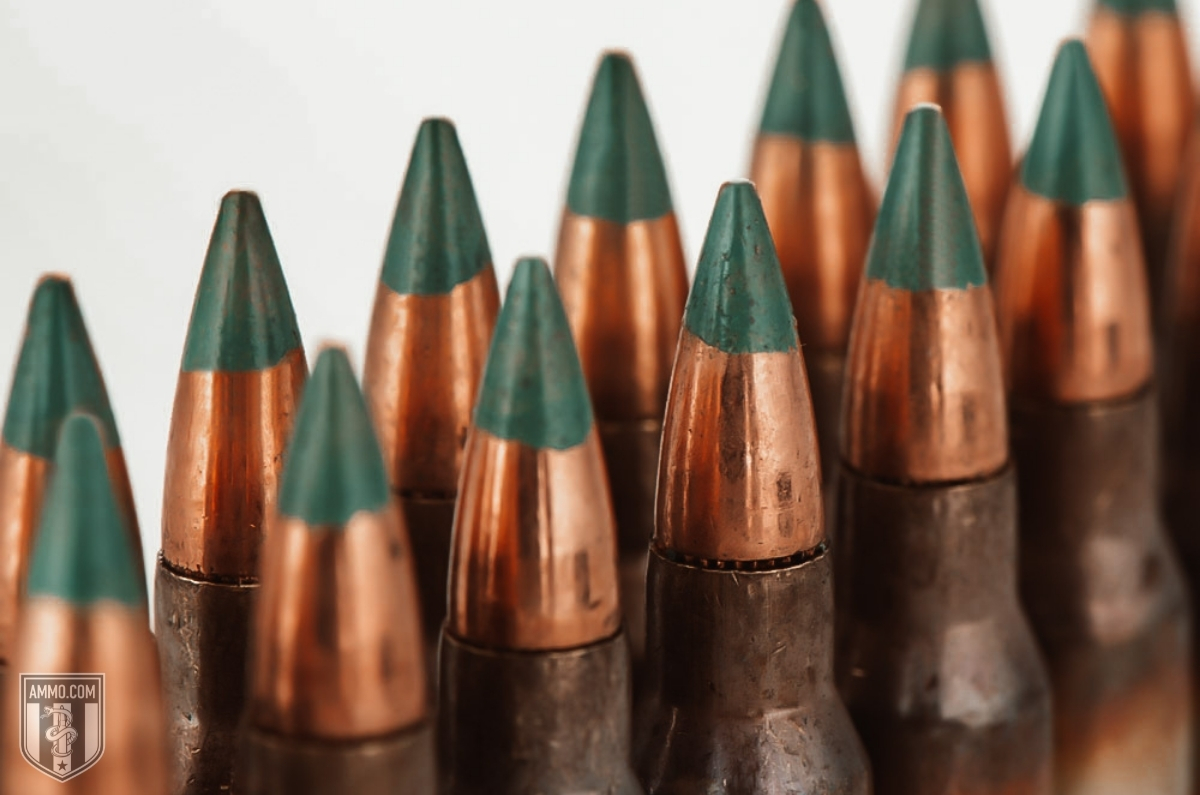
When it comes to home defense, both the 300 Blackout and the 5.56 NATO have some merit.
Based on sectional density, the 5.56 is the better choice in an urban environment as it will over penetrate less than .300 Blackout ammo. And in an apartment or housing edition, you do NOT want your bullets to over penetrate.
The last thing you want is for your bullets to go through the bad guy and into Aunt Bee one house/apartment over. A 5.56 will still penetrate through several layers of dry wall, but not as many as the 300 Blackout.
However, if you want maximum stopping power, it is hard to beat a 30-round magazine full of 220 grain subsonic 300 Blackout ammo raining righteous vengeance out of a suppressed SBR. This rifle would be completely hearing safe (no need for ear protection) and would deliver a lot of kinetic energy to the bad guy, just at the cost of potential overpenetration.
Some shooters might point out that the use of handguns might be the better option when it comes to home defense, so let’s consider that for a moment.
A 45 ACP is somewhat comparable as it fires a subsonic, 230 grain bullet. The 45 ACP will be packing approximately 350 ft-lbs of energy at the muzzle. Compare that to the 220 grain weight bullet fired from the 300 BLK with a muzzle energy of 480 ft-lbs, that’s almost 150 ft-lbs more!
There’s no doubt that handguns have their place, but as a former instructor taught me – “You use your handgun to fight to your rifle.”
As for me, I’ll take subsonic 220 gr 300 BLK slung from a suppressed SBR when it comes to home defense and judiciously dispensing well-placed justice any day of the week. Those terminal ballistics are just too juicy for me to overlook.
5.56 vs .300 Blackout: Rifle Availability
As .300 Blackout ammo was specifically designed to be fired from an AR-15, there are 300 BLK rifles aplenty as the AR platform is the most popular sporting rifle in the United States. As a .300 Blackout conversion only requires a new upper receiver or a barrel change, it means that ANY AR-15 chambered in 5.56 can be a host for a 300 BLK.
Furthermore, with the 300 Blackout breaking into the deer hunting community, several options are now available in bolt-action rifles as well.
Rifles for both 5.56 and 300 BLK are plentiful and reasonably priced.
Speaking of overall price make sure to check out our stock of Hornady 300 Blackout ammo, Fiocchi 300 Blackout ammo and Wolf 5.56x45.
5.56 vs .300 Blackout: Ammo Price and Availability
When it comes to availability, the 5.56/223 Rem is one of the most plentiful rifle cartridges in North America. As it is our frontline military cartridge, there are numerous manufacturers and varieties of 5.56 on the market today.
With a wide variety of bullet weights to meet your specific needs, ranging from 40 gr all the way up to 80 gr weight bullets, the 5.56 offers a bullet for almost any application.
On average, standard FMJ ammo for 5.56 will run around $0.60 per round at the time writing.
In contrast, 300 Blackout ammo is not as diverse, with typical bullet weights of 110 gr, 125 gr, 147 gr, and 200+ gr as your only options.
Furthermore, 300 BLK ammo is almost twice as expensive as 5.56, checking in at just under $1 per round at the time of writing.
Lastly, as .300 Blackout is not a widespread military cartridge at the moment, there are no surplus options available.
If you are a high-volume shooter or you just like plinking over the weekend and don’t want to break the bank, the 5.56mm NATO is the better option.
Buying in bulk is always smart, make sure to check out our stock of 300 blackout bulk ammo, 7.62x39 bulk ammo, and 5.56 bulk ammo.
5.56 vs .300 Blackout: Reloading
When it comes to reloading, both the 5.56 and the .300 Blackout are a joy.
Both cartridges have plenty of bullet options available. For the 5.56 there are plenty of manufacturers like Hornady, Barnes, and Sierra who make 0.224” diameter bullets for you to choose from.
As .300 Blackout ammo shoots a 0.308” diameter bullet, this means that surplus 308 Winchester bullets will work just fine as well as all other 308 options.
However, one downside of the 300 BLK is that new brass cases will be rather expensive. But if you know what you’re doing, you can convert 5.56 brass into 300 BLK, and 5.56 brass is cheap and easy to come by.
.300 Blackout vs 5.56 Ballistics Chart
Our team here at Ammo.com has put together some amazing ballistics charts comparing the 5.56 NATO to the .300 Blackout. Here you can compare the muzzle velocity, muzzle energy, and bullet drop for your favorite bullet weight loadings.
.300 Blackout Ballistics
Note: This information comes from the manufacturer and is for informational purposes only. The actual ballistics obtained with your firearm can vary considerably from the advertised ballistics. Also, ballistics can vary from lot to lot with the same brand and type load.
| 300 Blackout Bullet WEIGHT | Muzzle VELOCITY (fps) | Muzzle ENERGY (ft. lbs.) | TRAJECTORY (in.) | |||||||||||
|---|---|---|---|---|---|---|---|---|---|---|---|---|---|---|
| Muzzle | 100 yds. | 200 yds. | 300 yds. | 400 yds. | Muzzle | 100 yds. | 200 yds. | 300 yds. | 400 yds. | 100 yds. | 200 yds. | 300 yds. | 400 yds. | |
| 110 Grain | 2150 | 1886 | 1646 | 1432 | 1254 | 1128 | 869 | 661 | 501 | 384 | 0 | -8.3 | -29.6 | -67.8 |
| 125 Grain | 2250 | 2031 | 1826 | 1636 | 1464 | 1404 | 1145 | 926 | 743 | 595 | 0 | -7 | -24.4 | -54.8 |
| 220 Grain | 1000 | 968 | n/a | n/a | n/a | 488 | 457 | n/a | n/a | n/a | 0 | n/a | n/a | n/a |
5.56x45mm Ballistics: Chart of Average 5.56x45mm Ballistics
Note: This information comes from the manufacturer and is for informational purposes only. The actual ballistics obtained with your firearm can vary considerably from the advertised ballistics. Also, ballistics can vary from lot to lot with the same brand and type load.
| 5.56x45mm Bullet WEIGHT | Muzzle VELOCITY (fps) | Muzzle ENERGY (ft. lbs.) | TRAJECTORY (in.) | |||||||||||
|---|---|---|---|---|---|---|---|---|---|---|---|---|---|---|
| Muzzle | 100 yds. | 200 yds. | 300 yds. | 400 yds. | Muzzle | 100 yds. | 200 yds. | 300 yds. | 400 yds. | 100 yds. | 200 yds. | 300 yds. | 400 yds. | |
| 55 Grain NATO | 3130 | 2740 | 2382 | 2051 | 1750 | 1196 | 917 | 693 | 514 | 372 | 1.1 | 0 | -7.3 | -23 |
| 75 Grain NATO | 2910 | 2676 | 2543 | 2242 | 2041 | 1410 | 1192 | 1002 | 837 | 693 | 1.2 | 0 | -7 | -21 |
.300 Blackout vs 5.56 Conclusions
.300 AAC Blackout ammo is a hard-hitting 30-caliber upgrade to the AR platform that mimics the terminal ballistics of the Russian 7.62x39 and adds new levels of versatility to the rifle. The ability to change between supersonic rounds for longer shots and subsonic ammo for CQB with only a magazine change adds a level of flexibility not seen with the 5.56mm NATO.
The innovative design of the 300 Blackout allows it to reach its full potential within a 9-inch barrel and performs best when suppressed, providing the shooter with a compact, quiet, powerful SBR with phenomenal stopping power.
The 5.56mm NATO is a combat-proven round that has served the U.S. Military with distinction for over 60 years. Its reliability, ability to shoot longer ranges, and low cost of acquisition make it an amazing choice for plinking, self-defense, and the preservation of liberty.
Which is best for you? That will depend primarily on what you are looking for from your AR-15.
The default answer is to have both, and since a full conversion can be achieved by a simple upper receiver swap, this makes the concept much more palatable to your wallet.
Both rifle cartridges will serve you well in your shooting needs and will be more than adequate in any home defense situation.
Pick whichever cartridge speaks to your needs the most and hit the range…You won’t be disappointed!
Ammo Comparisons
- .308 vs 5.56
- 6.5 Creedmoor vs .308
- .300 Blackout vs .308
- .300 Win Mag vs .308
- .243 vs .308
- .308 vs .30-06
- 7mm-08 vs .308
- .270 vs .308
- 7.62x39 vs .308
- .223 vs .308
- .338 Lapua vs .308
- .380 ACP vs 9mm
- .223 vs 5.56
- .300 Blackout vs 5.56
- 9mm vs 45 ACP
- 9mm vs 40 S&W
- .357 SIG vs 9mm
- 10mm vs 9mm
- 9mm vs 9mm Luger
- .243 vs .270
- .300 Win Mag vs .30-06
- .270 vs .30-06
- .40 vs .45
- 38 Special vs 357
- 9mm vs 40 vs 45
- 5.56 vs 7.62x39
- 338 Lapua vs .30-06
- .30-30 vs .30-06
- 300 PRC vs 338 Lapua
- .30-06 vs 7mm
- 300 Win Mag vs 338 Lapua
- 300 PRC vs 300 Win Mag
- 300 WSM vs 300 Win Mag
- 338 Win Mag vs 338 Lapua
- 12 Gauge vs 20 Gauge
- 10mm vs 357 Mag
- .30-30 vs 7.62x39
- 224 Valkyrie vs 22-250
- 17 HMR vs 22 Mag
- 7.62x39 vs .300 Blackout
- 45 ACP vs 45 Auto
- 45-70 vs 30-30
- 300 Blackout vs 223
- 357 Magnum vs 9mm
- 350 Legend vs 300 Blackout
- 224 Valkyrie vs 223
- 45 ACP vs 38 Super
- 6.5 Grendel vs .308
- 17 HMR vs 22 LR
- 10 Gauge vs 12 Gauge
- 22-250 vs 223
- 45 Colt vs 45 ACP
- 350 Legend vs 30-30
- 5.7x28 vs 223
- 5.7 vs 9mm
- 5.56 vs 5.7
- 22 vs 9mm
- Buckshot vs Birdshot
- 450 Bushmaster vs 308
- 450 Bushmaster vs 223
- Buckshot vs Slug
- 6.5 Grendel vs 5.56 vs 223
- 6mm ARC vs 6.5 Grendel
- 44 vs 45
- 458 SOCOM vs 5.56
- 357 vs 44
- 32 ACP vs 380
- 300 Win Mag vs 338 Win Mag vs 338 Lapua Mag
- 450 Bushmaster vs 458 SOCOM vs 50 Beowulf
- 6mm Creedmoor vs 6.5 Creedmoor
- TMJ vs FMJ
- 44 Special Vs 44 Magnum
- 45 90 vs 45 70
- 6.8 Western vs 6.8 SPC
- 50 Beowulf vs 50 BMG
- 26 Nosler vs 6.5 PRC
- 28 Gauge vs 410
- 6.8 SPC vs 5.56
- 6.8 SPC vs 6.5 Grendel
- 6.8 Western vs 7mm Rem Mag vs .28 Nosler
- 6.8 Western vs 6.5 Creedmoor
- 22 Hornet vs 223
- 6.8 Western vs 6.5 PRC
- .410 vs 12 Gauge
- .410 vs 20 Gauge
- 22 LR vs 22 Mag
- 6mm ARC vs 243
- 7mm-08 vs 270
- 243 vs 6.5 Creedmoor
- Nickel vs Brass Casing
- 204 Ruger vs 223
- 50 Beowulf vs 5.56
- 260 Remington vs 6.5 Creedmoor
- 6mm Remington vs 243
- 28 Nosler vs 300 PRC
- 50 Beowulf vs 50 AE
- 22 Nosler vs 22-250
- 450 Marlin vs 45-70
- 300 Win Mag vs 300 Norma
- 458 SOCOM vs 300 Blackout
- 38-55 vs 45-70
- 22 Hornet vs 22 LR
- 300 Norma vs 338 Lapua
- 338 Lapua vs 50 BMG
- 28 Nosler vs 300 Win Mag
- 28 Nosler vs 6.5 Creedmoor
- 204 vs 22-250
- 458 SOCOM vs 45 70
- 44 40 vs 45 70
- 6.8 SPC vs 6.5 Creedmoor
- 450 Bushmaster vs 30-06
- 7mm Rem Mag vs 300 Win Mag
- 30 Carbine vs 223
- 25-06 vs 30-06
- 26 Nosler vs 28 Nosler
- 16ga vs 12ga
- 30 06 vs 7.62 x54R
- 9mm Makarov vs 9mm Luger
- 350 Legend vs 223
- 30 Carbine vs 5.56
- 6.5x55 vs 6.5 Creedmoor
- 6.5 Creedmoor vs 270 vs 25-06
- M193 vs M855
- 450 Bushmaster vs 458 SOCOM
- 6.5 Grendel vs 6.5 Creedmoor
- 350 Legend vs 5.56
- .277 Fury vs 6.8 SPC
- 277 Fury vs 300 Win Mag
- 10mm vs .45 ACP
- 277 Fury vs 223
- 6.8 SPC vs 300 Blackout
- 6.5 PRC vs 6.5 Creedmoor
- 277 Fury vs 308
- 277 Fury vs 6.5 Creedmoor
- 350 Legend vs 450 Bushmaster
- 277 Fury Vs 5.56 NATO
- 10mm vs 40S&W
- 32 ACP vs 9mm
- 32 Special vs 9mm
- 8.6 Blackout vs 300 Blackout
- 30 Super Carry vs. 9mm
- 5.56 vs 9mm
- .50 Action Express vs 9mm
- 7.62x25 vs. 9mm
- 10mm vs 44 Magnum
- 300 Blackout vs 300 Win Mag
- 6.5 Grendel vs 300 Blackout
- 460 Rowland vs 10mm
- 300 RUM vs 300 PRC
- 300 Norma vs 300 PRC
- 45 GAP vs 45 ACP
- 7mm PRC vs 300 Win Mag
- 300 PRC vs 6.5 Creedmoor
- 300 PRC vs 308
- 357 SIG vs 357 Mag
- 7.62x39 vs 7.62x51
- 243 Win vs 223 Rem
- 30 Nosler vs 300 PRC
- 6.5 Creedmoor vs. 30-06 Springfield
- 450 S&W vs. 44 Magnum
- 6.5 Creedmoor vs. 300 Win Mag
- 454 Cassull vs. 45-70 Govt
- 454 Cassull vs. 44 Mag
- 7.62x54r vs. 308 Winchester
- 22 ARC vs. 223 Rem
- Subsonic vs. Supersonic Ammo
